Editor’s note: This article was originally published in December 2013. Updated April 2022.
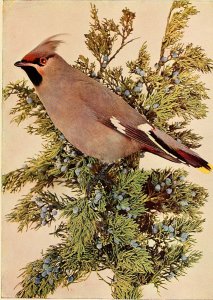
Eastern red cedar (Juniperus virginiana) is a very common native plant in Eastern North America. The common name can be slightly misleading as it’s technically not a true cedar but a juniper. These tall, slim trees with their waxy, light blue-colored berries are often overlooked as a wild edible. But they’re a valuable species and a vital food source for wildlife like the cedar waxwing.
There are a number of junipers with non-toxic aromatic berries including Eastern red cedar, but there are also a few significantly toxic ones as well. The toxic ones are difficult to distinguish from the non-toxic ones, but this article will help you make the distinction. Eastern red cedar berries are a traditional Native American flavoring and medicine.

Edibility – Cedar Berries and Foliage
Eastern red cedar berries and other non-toxic junipers have been used in a number of ways. Native Americans often added juniper berries as a flavoring to food dishes and grains. Deer and other meat were often cooked with Juniper berries. Different groups had their own unique preparation methods, including drying, soaking, mashing, or just eating them raw.
Compared to other edible berries, Eastern red cedar berries actually take 3 years to mature. And they’re considered ready to pick when they’re a darker blue. They do have a waxy white, protective coating, which can rub off to reveal a deeper color underneath.
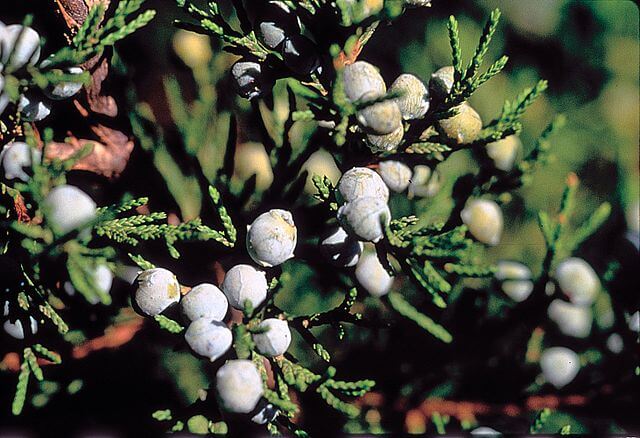
Health benefits of Eastern red cedar
The berries of Eastern Red Cedar have a number of medicinal uses. A wild herbal tea made from the berries has been commonly used for the treatment of coughs and colds, and to expel intestinal worms. Chewing the berries could also soothe mouth sores and ulcers. External application in the form of a poultice may help with infections and warts due to the plant’s antiseptic properties. Like so many other unknown edibles, Eastern red cedar also has a cancer-fighting compound called podophyllotoxin.
Eastern red cedar in Native American culture
Juniper berries and young twigs were made into a medicinal tea by Native American Tribes. Eastern red cedar is slightly less aromatic than some other junipers but it can still be used in much the same way.
Because Eastern red cedar trunks avoid decay when placed in soil, they were often used as a post marker for territories. If you’re from Baton Rouge in Louisiana, it’s actually the reason that inspired French traders at the time to name the city. You’ll find that many old storage units, like chests and wardrobes, were lined with Eastern red cedar to deter pests and mold.
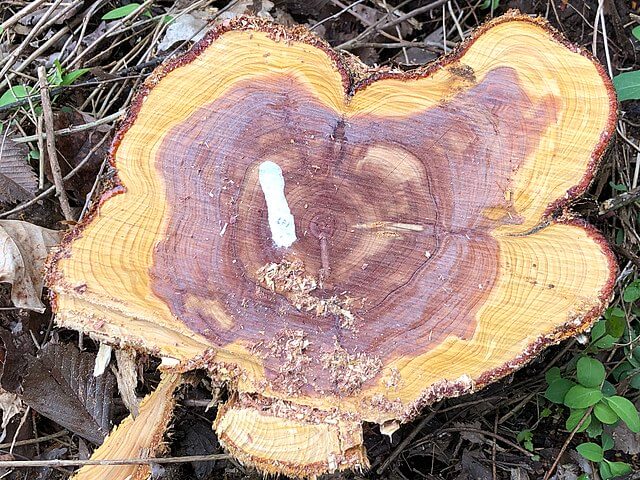
Cautions and lookalikes
Eastern red cedar is considered an edible species of Juniper. However eating large amounts of the plant or consuming its essential oil could lead to acute poisoning, although rare. If an extremely large amount is eaten severe poisoning could include vomiting, convulsions, or possibly even death. But like any food, moderation is key. Traditionally juniper berries have been associated with birth control. So you should not take Eastern red cedar if you are pregnant or breastfeeding.
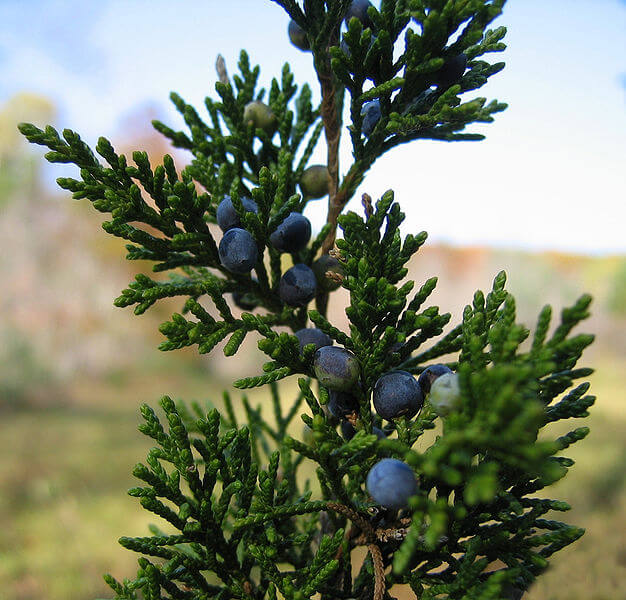
Most Juniper species are not significantly toxic, and no Native American species are. However, it is important to be wary of toxic lookalikes. There are Southern European species of significantly toxic junipers including Juniperus sabina and Juniperus oxycedrus. They are very difficult to tell apart from non-toxic Junipers especially since they hybridize with them, so to play it safe there is one rule to follow.
Generally, all upright tree-form junipers are non-toxic, that includes Eastern red cedar (Juniperus virginiana), Southern Red Cedar (Juniperus silicicola), and Rocky Mountain Juniper (Juniperus scopulorum), as well as others. It is worth noting that the vast majority of shrub-form junipers are non-toxic. But, they are difficult to distinguish from toxic ones and should be avoided unless positive identification can be made.
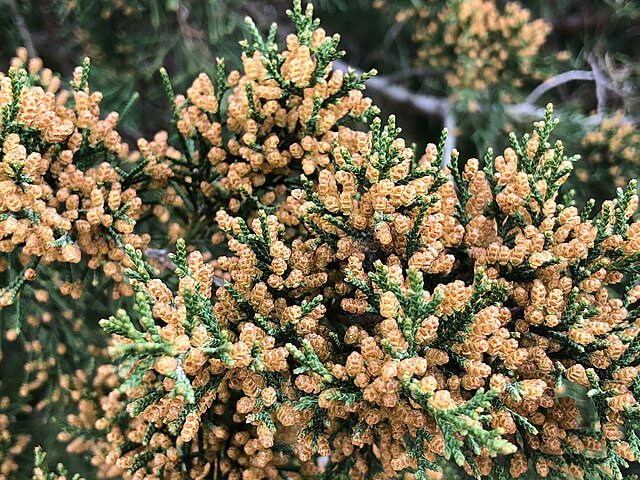
Key ID features of Eastern red cedar
One way to identify any juniper from other evergreens is to notice the distinct difference between the two types of foliage that are often present on the same tree. Young leaves are long sharp and pointed needles. Whereas older growth will have short scale-like rounded foliage. This distinct difference between old and new foliage can also be seen in the cypress tree genus (Chamaecyparis).
The overall shape of Eastern Red Cedar is another great way to distinguish it from other junipers and evergreens. It is known for its very uniform upright shape, and it tends to be taller than many other juniper species. Like their foliage, the height and shape can also sometimes resemble cypress trees. On poor soil, however, the growth of an Eastern red cedar may be limited to a smaller bush.

The name Red Cedar comes from the reddish heartwood which is noticeable when the trunk or branch is cut. Eastern red cedar berries look very similar to other juniper berries and are not a good identification feature. For more information on identifying plants, check out our plant identification guide. It includes foraging tips and basic guidance on leaf structures, etc.
Southern red cedar
We actually have two separate varieties of Eastern red cedar (Juniperus virginiana) here in the US. The most common — that you’ll find in most Eastern states and across to the midwest — is the Juniperus virginiana var. virginiana. However in the South, in parts of Florida and Texas, there’s a variety known as Southern/Sand Juniper (Juniperus virginiana var. silicicol). They’re very similar in appearance, with minor differences in cone sizes and bark color. But, most importantly, both have edible berries.
Did you know…
During the dustbowl of the 1930s, landowners and farmers were encouraged to plant Eastern red cedar trees as a windbreak. This is likely why you’ll find so many of them in the prairies and plains of the midwest.
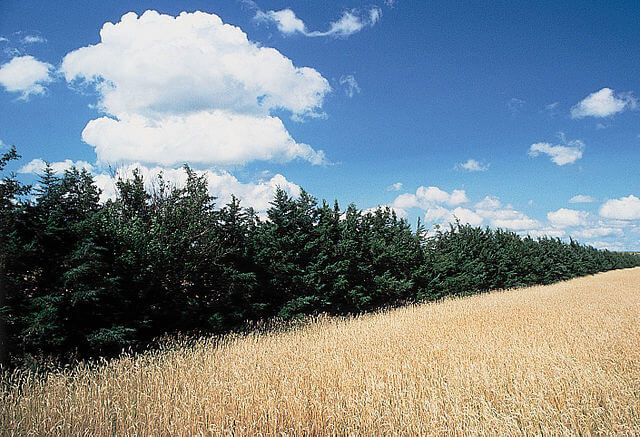
Conclusion
Eastern red cedar is a common tree in New England and other parts of the Eastern United States. When you next find one in the wild, try collecting a few berries and/or foliage to use as an interesting flavoring on meat and grain dishes. Or brew a healing, herbal tea instead, to soothe a cough or cold. Like the Western red cedar, Native Americans greatly valued the Eastern red cedar for its many uses. It’s another valuable wild edible to add to your list, and one that will enrich our foraging skills.
Many of our readers find that subscribing to Eat The Planet is the best way to make sure they don't miss any of our valuable information about wild edibles.
See our privacy policy for more information about ads on this site

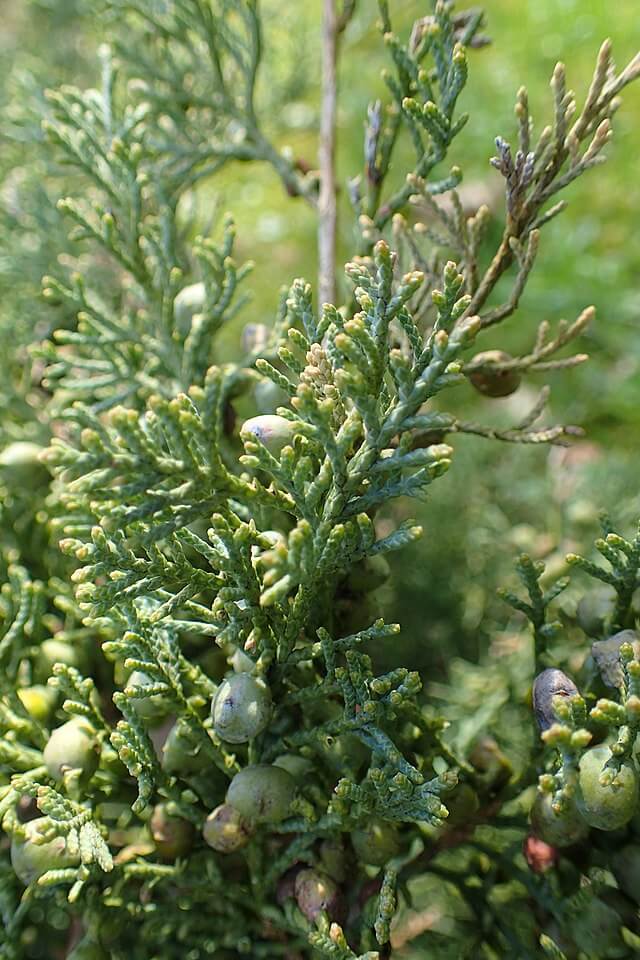
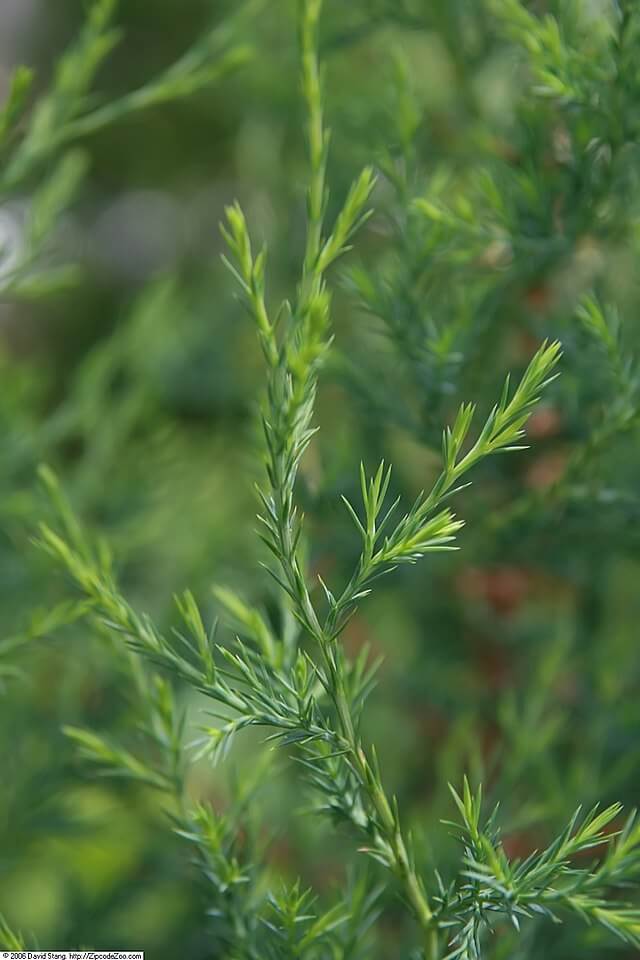






7 Responses
Can you edit and put what animals eat it please because I am doing a project and I need to know what eats it please
You can email me and I can try to help you find the info you need. eattheplanet.org@gmail.com
I have noticed that in some years the blue berries are on the branches of the trees, but some years there are absolutely NO little blue berries? Why do they sometimes have the berries and some years there are NONE!
I have two trees one male and one female.The female tree is the only one that has the berries on it.
Also the “little blue berries” (technically the female cone of the plant) take three years to develop. You may be coming to the tree during the early year of development.
Wonderful information! By they way – I tried to Subscribe, but get a little red message above saying, “Pleas click on the ‘reCAPTCHA’ box”, but I don’t see the CAPTCHA box… Am I missing something…?
When using Eastern Red Cedar berries as a spice you should know, if they are picked really ripe, like in December, they taste like Juniper berries mixed with oranges 🍊. I tried to use them in a juniper orange duck recipe but the orange flavor overshadowed everything. I should have left out the oranges because these juniper berries already taste like orange.